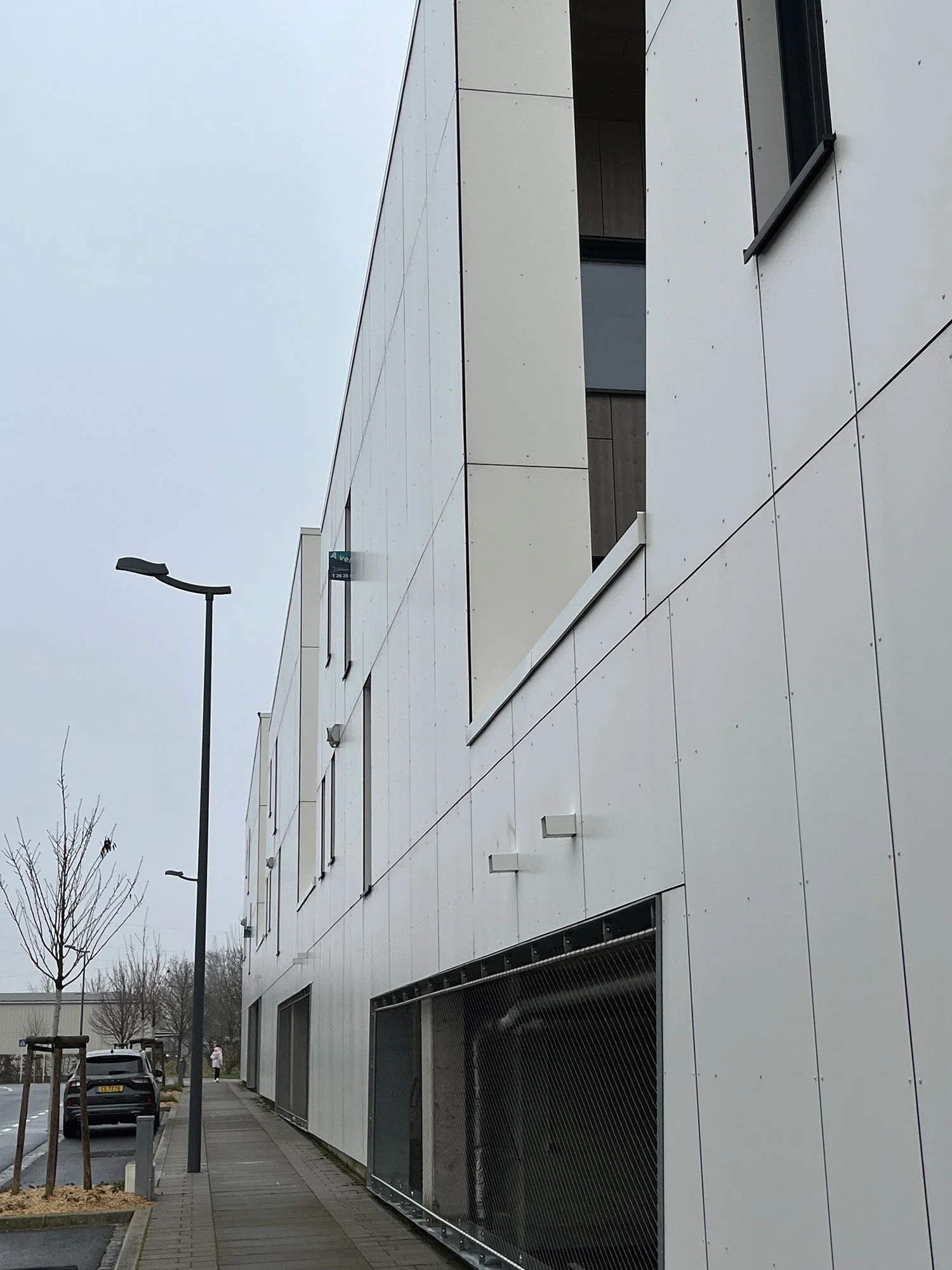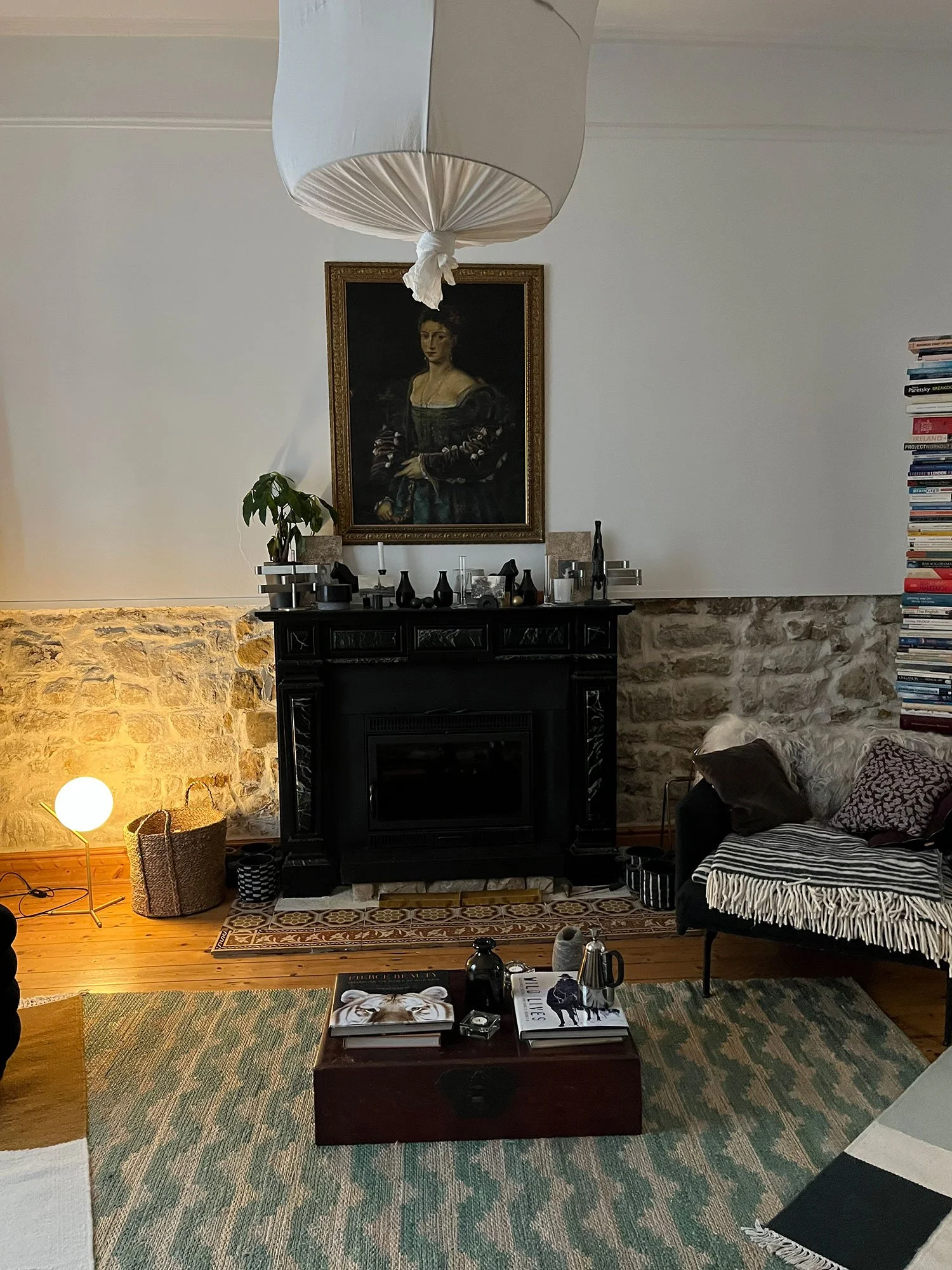A short reflection on particulate matter and the joys of “fresh” air.
I used to think opening a window was a wholesome act. A symbol of fresh starts. Morning light, crisp air, a hint of birdsong. When I open my window these days, I inhale a curious blend of exhaust fumes, cement dust, and what I can only describe as eau de construction fatigue.
It turns out “fresh air” is more of a nostalgic concept. Like handwritten letters or neighbours who don’t guard parking spots like medieval fiefdoms.
And so we arrive at part three of the “Battle for Public Space” saga. First came the pavements (turf wars via turds), then the streets (parking roulette with bonus emotional damage), and now we ascend to the skies, or what remains of them between scaffolding and exhaust pipes.
PM2.5: The Polite Term for "You’re Inhaling That"
Let’s talk about PM2.5. Sounds vaguely like a building regulation or an IKEA screw, but it’s much more intimate. It stands for particulate matter smaller than 2.5 microns. For scale: a human hair is about 70 microns thick. These particles are microscopic. They bypass your nose, your throat, and settle deep in your lungs.
Unlike dog poo, they don’t smell. They don’t leave a mark on the pavement. But they’re linked to: Asthma, heart disease, strokes, reduced life expectancy, and cognitive decline.
Moderate Pollution Levels
According to my AirVisual tracker by IQAir, a Swiss company, recognised as a global leader in air quality monitoring technology, we regularly clock in at moderate to high pollution levels.
“Moderate” sounds reassuring. Balanced. Reasonable. The kind of word you’d want describing your wine intake or emotional reactivity. But when it comes to air quality, it’s a bit like being told the water’s only mildly toxic.
The World Health Organization doesn’t mince words. Long-term exposure to even moderate PM2.5 levels increases your risk of serious health problems. The latest WHO air quality guideline (AQG) states that annual average concentrations of PM2.5 should not exceed 5 µg/m³. 24-hour average exposures should not exceed 15 µg/m3 more than 3 - 4 days per year. Mondorf floats above that far more often than one might expect for a spa town.
The Yoga-Mat Paradox
There’s a peculiar cultural contradiction in all this. We buy organic tomatoes. We detox. We journal about mindfulness. Then we step outside and breathe in ultrafine dust like it’s a wellness ritual.
There’s a man here who jogs past my house every morning, stoic, purposeful, breathing deeply as the traffic roars by. I admire the discipline. But sometimes, when a delivery truck idles too long, or when fine dust hangs heavy in the still air, I want to stop him and say: You’re not running, you’re marinating.
Air as a Mirror
Here’s the truth no one wants to admit: bad air is not just pollution. It’s neglect. It means no one’s paying attention. That health and quality of life have been traded for “development” and pass-through commuter traffic. We wouldn't accept a broken sewage system. But somehow, when it comes to air, the thing we take into our bodies 20,000 times a day, we shrug.
We beautify streets while pretending the air is neutral. We hold public consultations about landscaping while the air itself carries silent warnings. But air is part of the built environment too. It may be invisible, but it tells you a great deal about what kind of place you live in.
And right now? The air says: It’s complicated.
What Now?
You can’t block PM2.5 with a flowerpot. You can’t shoo it away with passive-aggressive signage. It flows through public and private space alike, democratic in the most depressing sense.
But maybe it’s time to name it. Talk about it. Measure it.
Maybe the next urban design conversation should include not just where we build and where we park, but what we breathe while living and standing there.
Perhaps it’s time for air quality monitors to become as commonplace as traffic signs. For pollution levels to feature as prominently in urban planning as parking spaces. For our definition of “livability” and “quality of life” to include not just what we see, but what fills our lungs each day.
After all, the real battle for public space isn’t just what’s visible. Sometimes, it’s what seeps in through the cracks.
Want to check the air quality in Mondorf-les-Bains? Click here to view live data.
About IQAir:
IQAir is a Swiss-based company and global leader in air quality monitoring and purification. In collaboration with the United Nations, they operate the world’s largest real-time air quality data platform. Their annual reports are widely cited as authoritative sources on global pollution.
























